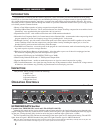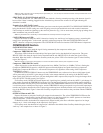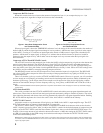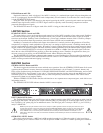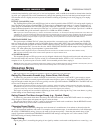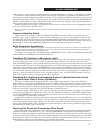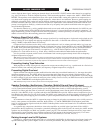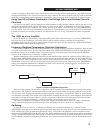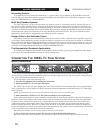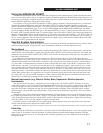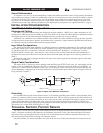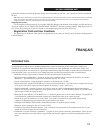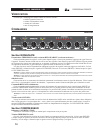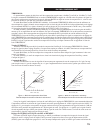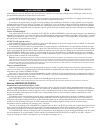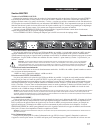
Increasing Sustain
To increase the sustain of a musical instrument (e.g., a guitar or bass), use an equalizer in the Sidechain circuit and
boost the EQ in the dominant frequency range of the instrument. Set the 166XL for slow Hard Knee compression, with a
fairly low THRESHOLD and a moderate RATIO.
Multi-Way Speaker Systems
If a single compressor is to be used with a multi-way speaker system (i.e., before the crossover, after the EQ), the sys-
tem operator is faced with the problem of keeping levels below the point of damage of the most sensitive part of the sys-
tem. If, for example, mid-range drivers are frequently damaged, the whole system must be operated at a lower sound-pres-
sure level, or additional mid-range drivers must be added. By inserting an equalizer in the Sidechain path to the 166XL, it
can be made more sensitive to frequencies in the range handled by the sensitive drivers. The system can then be run at
higher levels and will only be dropped back when damaging signals are present.
Using a Filter in the Sidechain Circuit
The results of inserting a filter in the Sidechain circuit are basically the same as obtained with an equalizer, as previous-
ly described. Those frequencies passed by the filter are subject to compression (or at least they are subject to considerably
more compression than those frequencies outside the passband). Because a passive filter can have insertion loss, it may be
necessary to lower the 166XL’s THRESHOLD setting to maintain a given amount of gain reduction within the filter pass-
band; this can be determined by monitoring the 166XL’s THRESHOLD LEDs.
Pre-Emphasis for Broadcast Applications
By inserting a pre-emphasis filter network in the Sidechain path of a 166XL processing pre-emphasized audio, higher
levels can be run within the headroom limitations of the broadcast chain.
CONNECTING THE 166XL TO YOUR SYSTEM
Basic Connection
The 166XL has balanced inputs and outputs, and can be used with any line-level device. Some common examples
include: mixing consoles, musical instruments, patch bays and other signal processors. For more specific cabling informa-
tion, refer to Installation Considerations, page 18.
For all connections, refer to the following steps:
1. Turn Off all equipment before making any connections.
2. Mount the 166XL in a 1U rack space (Optional).
The 166XL requires one rack space (height) and 1 rack space (width). It can be mounted above or below anything that
doesn’t generate heat, since it requires no special ventilation. Ambient temperatures should not exceed 113F when equip-
ment is powered.
Caution: Never remove the cover. There are no user-serviceable parts inside, and you run the risk of an electric shock.
3. Make connections via XLR or 1/4” TRS jacks according to your requirements.
Typical patch points include: a mixer’s channel or subgroup inserts when using the 166XL on individual instruments or
tracks; the mixer’s main outputs or bus inserts when mixing; an instrument preamp’s effects loop when using the 166XL
for guitar or bass; main outs of a submixer (e.g., keyboard mixer) as the signal is sent to main mixer; between a DAT’s
output and an analog cassette input. When using a chain of processors, the 166XL may be placed either before or after
effects or dynamic processors. However, if you are using the 166XL for speaker protection, the compressor should be as
close to the amplifier as possible in the signal chain. We recommend you use common sense and experiment with different
setups to see which one provides the best results for your needs.
Note: Never connect the 166XL’s input to the speaker output of an instrument or power amplifier.
4. Power On the unit: Securely connect the AC power cord to the unit and mains power.
Note: Check the line voltage. The unit is shipped for 115V or 230V operation. Refer to the unit’s rear panel to verify your unit’s precise line voltage.
10
®
PROFESSIONAL PRODUCTS
dbx 166XL COMPRESSOR / GATE



